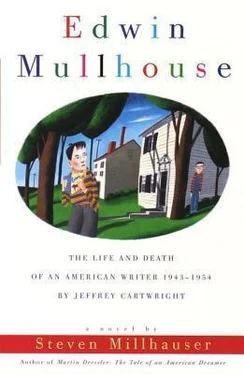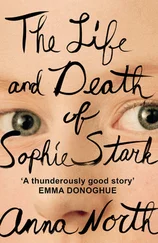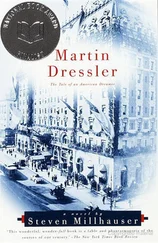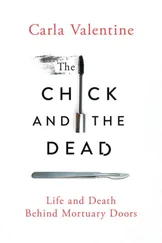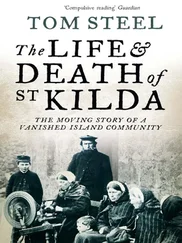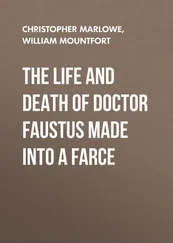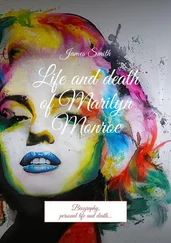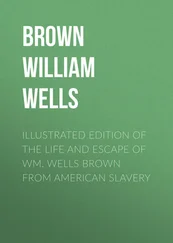Steven Millhauser - Edwin Mullhouse - The Life and Death of an American Writer 1943-1954
Здесь есть возможность читать онлайн «Steven Millhauser - Edwin Mullhouse - The Life and Death of an American Writer 1943-1954» весь текст электронной книги совершенно бесплатно (целиком полную версию без сокращений). В некоторых случаях можно слушать аудио, скачать через торрент в формате fb2 и присутствует краткое содержание. Год выпуска: 2011, ISBN: 2011, Издательство: Knopf Doubleday Publishing Group, Жанр: Современная проза, на английском языке. Описание произведения, (предисловие) а так же отзывы посетителей доступны на портале библиотеки ЛибКат.
- Название:Edwin Mullhouse: The Life and Death of an American Writer 1943-1954
- Автор:
- Издательство:Knopf Doubleday Publishing Group
- Жанр:
- Год:2011
- ISBN:9780307787385
- Рейтинг книги:3 / 5. Голосов: 1
-
Избранное:Добавить в избранное
- Отзывы:
-
Ваша оценка:
- 60
- 1
- 2
- 3
- 4
- 5
Edwin Mullhouse: The Life and Death of an American Writer 1943-1954: краткое содержание, описание и аннотация
Предлагаем к чтению аннотацию, описание, краткое содержание или предисловие (зависит от того, что написал сам автор книги «Edwin Mullhouse: The Life and Death of an American Writer 1943-1954»). Если вы не нашли необходимую информацию о книге — напишите в комментариях, мы постараемся отыскать её.
.
Edwin Mullhouse: The Life and Death of an American Writer 1943-1954 — читать онлайн бесплатно полную книгу (весь текст) целиком
Ниже представлен текст книги, разбитый по страницам. Система сохранения места последней прочитанной страницы, позволяет с удобством читать онлайн бесплатно книгу «Edwin Mullhouse: The Life and Death of an American Writer 1943-1954», без необходимости каждый раз заново искать на чём Вы остановились. Поставьте закладку, и сможете в любой момент перейти на страницу, на которой закончили чтение.
Интервал:
Закладка:
Twenty feet away hung another, less impressive curtain, composed of three different materials; later we learned that all the curtains were old living-room castaways that Penn had collected from the attics of sympathetic neighbors. There were no windows in the den; in addition to a single bulb hanging from the ceiling on a long chain, light came from three old standing lamps with frayed cords. To the right, against the wooden partition, lay a small sagging bed with a mustard-colored bedspread. Beyond it stood a white metal kitchen table with a single white wooden chair. A red-shaded standing lamp, glaring down at the table, was reflected dimly in its bright surface; the table was littered with comic books and tracing paper. Past the table stood an old chipped chest of drawers with brass loops instead of knobs, and past that, with its back to the far curtain, was a brown bookcase entirely filled with comic books. But it was the left wall that transformed Penn’s den into a kingdom. For there, illuminated by two tall bright lamps, blazed his masterpiece. The long cement wall had been whitewashed from floor to ceiling and on it, in brilliant glossy colors outlined in black, lay hundreds upon hundreds of cartoon characters of all sizes, tilted at crazy angles, overlapping one another, inhabiting one another’s eyes and noses — all jumbled together as if poured out of an enormous box, yet forming at a distance a vast abstract design. It was a fiery cartoon vision, an intricate map of Penn’s feverish and patient brain. There was a huge head of Pluto with his orange snout and round black nose and tall eyes, with one ear up and one ear half bent over; when you stood close you saw a miniature Bugs Bunny in his nose, complete with orange-and-green carrot. Woody Woodpecker and Mighty Mouse danced in a circle with Huey and Louie and Heckle and Jeckle and Popeye and Wimpy and Dopey and Sneezy as Dumbo flew over with Scrooge on his back and Dewey floated down at the end of an umbrella. There were hundreds and hundreds of them, I tell you, nay, thousands and thousands: here piled up on one another at the center of a bright red circus ring, there tumbling from trapezes whose ropes went up to nowhere; riding on one another’s backs and hats, spilling out of one another’s pockets; rowing boats, climbing ladders, leaping from flaming windows; some so small that you could recognize them only when Penn lent you his magnifying glass, one so large that it was a single eye stretching from floor to ceiling, and recognizable only by a rigid attention to certain of its monstrous curves; and mixed in with the real cartoons were Penn’s own creations, little Plutos with Krazy Kat heads, an elephant whose raised trunk became the neck of a giraffe, a smiling clock that had swallowed an ostrich, an aristocratic fly with a cane and a monocle. As we surveyed his masterpiece, the result of two years’ labor (and still incomplete), Penn watched us in languorous silence, breaking his pose of disdain only to indicate, in a quiet monotone, some marvel we had overlooked, such as a tiny row of twenty Donalds, one of which was different from all the others (it was Penn who introduced Edwin to the puzzle page of the Sunday paper). But he could not suppress a mild flutter of excitement as he pointed out to us a small whale floating in the pupil of a vast eye, and seated on top of its spout, distinctly lifelike through the magnifying glass, Penn himself in his striped t-shirt and brown shorts.
Oh it was a regular treasure-house, that den, and not the least of its attractions was the chipped bureau, each of whose twelve brass loops was attached to the nose of a small brass lion, and five of whose six drawers were filled with the fascinating implements of Penn’s many-sided art: bright tins of watercolors, slim paintbrushes whose tips were sometimes no thicker than a single hair, clean tubes of oilpaint squeezed carefully from the bottom, boxes of pastels and crayons, large pads of tracing paper, small pink pads, pieces of charcoal, looseleaf notebooks in black bindings, heaps of scattered pages, brown clipboards with silver clips, boxes of colored pencils, dozens of little plastic pencil sharpeners, thick packages of typewriter paper, red and green plastic rulers, wooden rulers with metal edges, bottles of colored ink, silver compasses holding yellow pencils, metal protractors, black wooden penholders, boxes of penpoints, and even a curious brush that Edwin laughed to see, for his father used exactly the same kind for shaving. Edwin was particularly fascinated by a crazily shaped sheet of transparent plastic approximately the size of a piece of typewriter paper: it was full of oddly shaped holes, like a piece of Swiss cheese, and the outside swooped and rippled in dozens of strange curves. Penn explained that it was from a beginner’s Cartoon Kit that had been given to him at the age of four; it was used for drawing difficult lines, one curve being useful for fat behinds and the cheeks of whistle-blowing policemen, another for fingers and long noses, another for birdcages and distant haystacks. Placing it over a clean corner of white paper cluttered with cats and policemen, and turning it about rapidly as he drew, Penn quickly sketched for us a complete cartoon farmer with a tall hat bent over in the middle, a nose shaped like a lightbulb, a fringe of whiskers, droopy pants held up by a single strap, and a pitchfork in one hand. Edwin begged Penn to let him have the picture; in reply Penn tore the page carefully into sixteen pieces and dropped them into the red wastebasket under the white metal table.
The heavy bottom drawer was completely filled with two layers of thick black books; Edwin was disappointed until Penn carefully removed one book, carried it to the table, and lovingly opened it to reveal a familiar burst of color. They were his oldest and most treasured comic books, bound twenty-four in a volume. Penn showed Edwin one so old that it contained many different strips; for it he had traded a precious magic trick consisting of a red cup and a disappearing black ball. Other volumes contained black-and-white comic strips from newspapers, cut out and pasted in to form a continuous series. The bulk of Penn’s less valuable comic books were housed in the wooden bookcase that stood with its back against the curtain and one end against the wooden partition. They were arranged by year, beginning with 1941, the year of Penn’s birth, and divided into sections by means of green metal dividers on rubber-covered bases. The years 1941 through 1944 filled the top shelf; thereafter each of the remaining four shelves was devoted to a single year. Other comics lay in neat piles in odd corners of the den, and duplicates were stored under the sagging bed. Penn had begun subscribing to several comic books at the age of four; from the age of five he had made it his business to purchase every single copy of every single series put out by Walt Disney: the monthlies, the bi-monthlies, the quarterlies, and the annuals. He was always filling in gaps in the early years, as some people fill in the gaps in stamp collections, and he kept up with several other publications as well as he was able. He eagerly questioned Edwin about his collection and snorted faintly through his sharp nose when Edwin, looking away, confessed to owning “not too many” (actually no more than a dozen at this time). Penn’s passion for comic books, incidentally, was not all-embracing; like Edwin after him, he had no interest whatsoever in what he called adult comics: detective stories, adventure stories, horror stories. For Penn, Superman and Dick Tracy and hairy monsters were real inhabitants of the real world, of no more interest to him than the radio news reports which he had stopped listening to at the age of three (World War II, for Penn, was a long adventure serial that his father listened to all night long, and Penn loathed radio serials). Only in the world of cartoon animals was Penn able to breathe with some measure of freedom. But even his beloved animals, he felt, were infected by a taint of caricature that rendered them almost real; he longed for creatures of absolute fantasy, bearing no relation to anything in this world. He showed us sketchbooks containing rough drafts of nameless cartoon creatures who lived under the sea or at the end of the rainbow; he showed us elaborate maps of entire countries in the insides of trees, filled with wavy lines representing rivers and rows of small triangles representing mountain ranges. He spoke of worlds inside a stone, a flame, a snowflake, a flash of lightning, a mushroom. He spoke of creatures made of ice, of glue, of sun, of green. He told us his idea for invisible cartoons, represented only by word-filled bubbles pointing at blank spaces; the cartoonist would represent their habits and adventures both by the words and by the act of pointing the bubbles at different places in a continually changing landscape; each reader would imagine a different creature. And with a mixture of aching fondness and lucid contempt, he showed us a comic book he had made long ago, full of green skies and black moons, red oceans and yellow islands, bound in bright covers and containing a page that advertised dozens of toys and gifts above a scrupulously drawn coupon with a dotted line.
Читать дальшеИнтервал:
Закладка:
Похожие книги на «Edwin Mullhouse: The Life and Death of an American Writer 1943-1954»
Представляем Вашему вниманию похожие книги на «Edwin Mullhouse: The Life and Death of an American Writer 1943-1954» списком для выбора. Мы отобрали схожую по названию и смыслу литературу в надежде предоставить читателям больше вариантов отыскать новые, интересные, ещё непрочитанные произведения.
Обсуждение, отзывы о книге «Edwin Mullhouse: The Life and Death of an American Writer 1943-1954» и просто собственные мнения читателей. Оставьте ваши комментарии, напишите, что Вы думаете о произведении, его смысле или главных героях. Укажите что конкретно понравилось, а что нет, и почему Вы так считаете.
